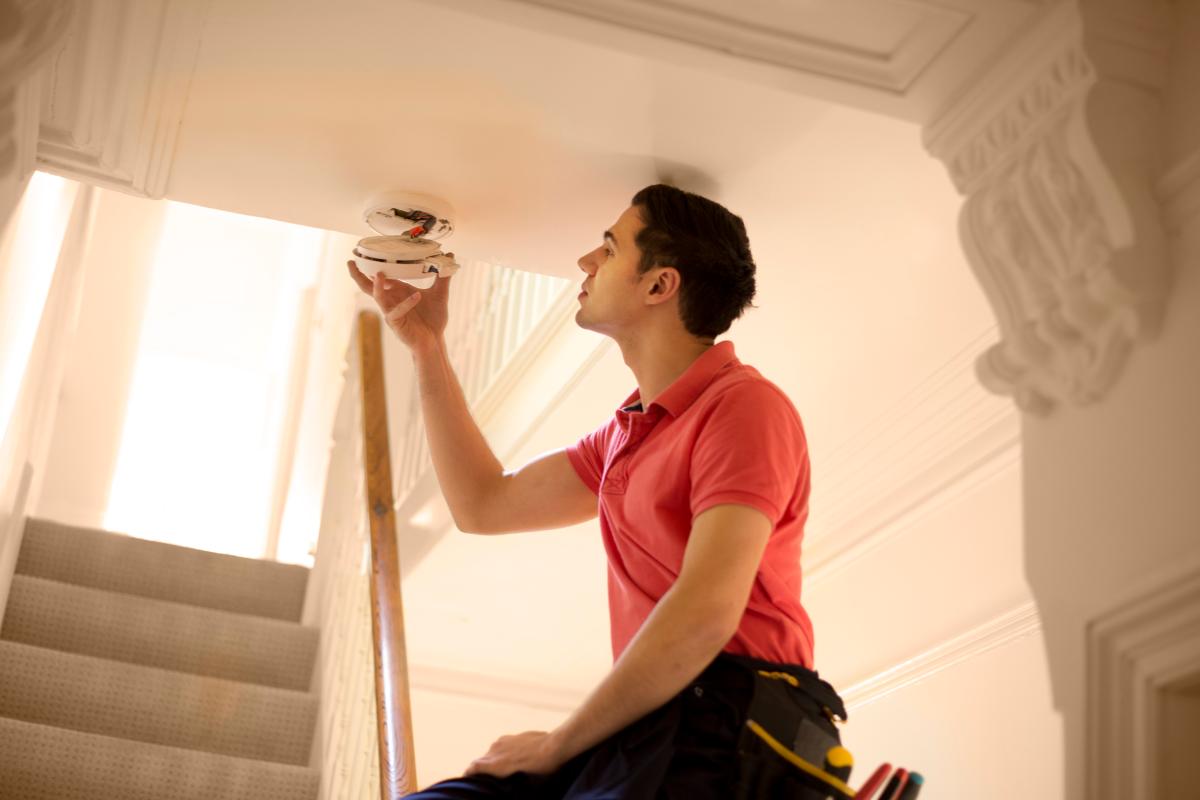
One of the biggest anxieties for landlords and tenants is the risk and consequences of fire. This is why smoke detectors are so important.

It doesn't seem as though it should become a bone of contention. But
it's surprising how often disputes can arise over the carpets in a rental
property.
Not because of differences of opinion over colour or shag pile I hasten
to add. But because carpets, or damage caused to them, are often the reason for
a landlord seeking to make a deduction from a tenant’s security deposit. And
more often than not the tenant will disagree with the claim. This could then
lead to a lengthy arbitration process before either party can move on. But why
are carpets such a source of friction between landlord and tenant?
The problem, of course, is that carpets are heavily used. You can't
really avoid them. So naturally, they're going to suffer. If only from wear and
tear. But it's almost inevitable accidents will happen. In years past cigarette burns were common but
nowadays spilt wine, digging pets and disruptive children are more likely to
cause damage. So, carpets can take a hammering.
But just because a carpet is past its best doesn't mean a tenant is liable
to pay for repairs or a completely new carpet. Nor can a landlord automatically
assume they're able to make a deduction from the security deposit.
Its the tenant's responsibility to return the property in the same
condition it was at the start of the lease. This includes carpets. If the
carpet is damaged the landlord can make a deduction from the security deposit.
But the landlord must be able to prove the damage is down to the tenant and not
a result of wear and tear.
This can be a grey area. Wear and tear will occur through normal use.
The tenant isn't liable for this. Nor for damage caused by defects in the
property such as damp or mould.
And the onus is on the landlord to prove any claims of damage. With
regards to carpeting, obvious damage includes stains, rips and tears. Those
examples are pretty clear. But sometimes what appears to be damage is actually
wear and tear. What's important to remember is the landlord has to prove their
case. This is when the
inventory becomes so important.
At the start of every tenancy, the landlord should draw up an inventory.
This document includes written descriptions and photographs of the property and
all its fixtures and fittings. Including the carpets. This establishes the
condition of the property at the start of the tenancy.
At the end of the tenancy, a check out report is
compiled which is compared to the original inventory. This is how the landlord
can prove damage has occurred. But the inventory also protects the tenant
against unfounded claims by the landlord. Tenants should only sign the original
inventory document if they agree it presents an accurate picture of the
property at the time.
When a tenant pays a security deposit the landlord must lodge it with a
deposit
protection scheme. Essentially the scheme holds the tenant's money. The
scheme returns the deposit at the end of the lease. Unless that is the landlord
wants to withhold some or all of the deposit to pay for damages. In our example
for damage to a carpet.
The tenant could, of course, agree to the deduction. In this case, the
landlord is reimbursed for the cost of repair or replacement. The balance of
the deposit is then returned to the tenant. But if the tenant doesn't agree
with the deduction the deposit scheme will appoint an independent adjudicator
to decide the issue. The adjudicator's decision is binding.
As we've seen then Landlords can charge tenants for carpet damage. But
crucially they do have to prove the tenant is responsible for any damage caused
to the carpets in their rental property.
The rules have changed. How much can a landlord ask a tenant to pay as
a security deposit? Use our free calculator to
find out.